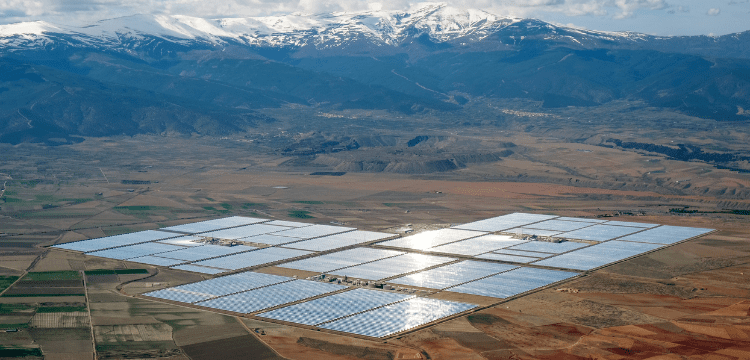Energy, country’s road to self-reliance

Ever wondered how it all started in the first place. What went wrong and who did what, you must be curious and thinking what I am going to tell you. One the major problems in the Pakistani economy which no one ever talks about -on a serious note- and it has also become a seasonal talk which only occurs mid-summer, at the time of acute scarcity of electricity when load shedding is at the peak. During this time, you must have heard various jargons such as, installed capacity, total generation, demand load, line losses, additional losses, peak load, base load, energy mix, imported coal, merit order, circular debt and so on and so forth. These buzzwords followed on by various government functional entities such as NEPRA, CPPAG, NPCC, NTDC, AEDB, PPIB and the list goes on. All these nomenclatures have no relevance to the average person and at the end of summertime every man is an energy expert. In fact, I’m referring about energy issues. The time bomb we are all sitting on top of, the black hole that is consuming everything, and the impending explosion will be far larger than in previous years.
The complexity and seriousness of the problem can be understood at the conclusion of this series of successive articles. It is indeed a grave concern for every Pakistani and a wakeup call for the decision makers.
Pakistan is grappling with a severe energy problem and the outcome of this has a significant effect on the nation’s ailing economy and precarious security environment. Some calculations indicate that during the previous few years, the country has lost up to 4% of its GDP due to energy shortages.
At the time of independence, it inherited 60 MW of power, the energy industry started off making some gains. WAPDA was founded twelve years later, in 1959. The installed capacity climbed from 119 MW to 366 MW after a year, and the total generation in 1960 was 781 GWH. Up until 1970, the installation of many Thermal and Hydel power units together with the building of the Mangla Dam increased the power generating capacity from 636 MW to 1331 MW. Due to the completion of the Tarbela Dam in 1976 and the Pakistan Atomic Energy Commission’s (PAEC) contribution to electricity production after the first nuclear power reactor began operating in 1972, the system capacity increased to roughly 3,000 MW throughout the 1980s.But sadly, the upward trajectory could not match the development pace and not endure for very long, soon it turned out to an energy deficient nation where the majority of the population has no or restricted access to power due to the conundrum of the ever widening gap between supply and demand.
Electricity generation, transmission, and distribution comes under the big umbrella of power sector. The Water and Power Development Authority (WAPDA, currently not vertically integrated), founded in 1958 and serving the entirety of Pakistan except for the areas surrounding Karachi, and K-Electric Limited (KEL), formerly the Karachi Electric Supply Company, founded in 1913 and serving Karachi and the surrounding areas, managed Pakistan’s power sector at that time. During the same period, Pakistan’s energy mix primarily relied upon thermal and hydel share was marginal. With the passage of time the share of thermal electricity increased further due to ever increasing demand of electricity. By the end of seventies, the share of thermal was 61.33% while the share of hydel was 38.67%. In the early eighties Nuclear Power Plant was installed and by 2008 the share of Thermal, Hydel and Nuclear in overall generation was 65%, 33% and 2% respectively.
By the end of 1990-91, Pakistan was able to produce about 7,000 MW of electricity. To provide transparent and efficient power regulation, the National Electric Power Regulatory Authority (NEPRA) was established in 1997. Thus, first independent power producer, i.e. Hub Power Station (HUBCO) was setup. To better manage power sector of Pakistan, another major development was made by establishing National Transmission and Dispatch Company (NTDC) in 1998. From 1990–1991 to 2004–2005, Pakistan’s installed total power generation capacity expanded by almost thrice, from 7000 MW to 17500 MW, with 64% of the capacity coming from thermal power units, 33% from hydropower, and 3% from its nuclear power facilities. In 2007 installed capacity had reached 19,670 MW which now rose to 40,606 MW in 2020- 21. The installed electric power generation capacity of Pakistan as of 30-06-2022remained 43,775 MW, the share of Thermal is 61%, Hydel 24% and Nuclear 8% and the renewable is 7%.
The National Electric Power Regulatory Authority (NEPRA) was founded by the government in 1998 as a part of its power sector reforms, which gained steam during the 1990s. It is the responsibility of NEPRA to monitor all segments of the sector, including the granting of generation, transmission, and distribution licenses as well as the setting of generation, transmission, and distribution tariffs for electricity at various levels (production, transmission, and consumption). The National Transmission and Dispatch Company (NTDC), three GENCOs, and eight distribution utilities were formed from the government’s dissolution of the Water and Power Development Authority (WAPDA). However, the unbundled enterprises have not yet undergone privatization and are still managed by the Ministry of Water and Power. The operational and financial performance of the unbundled entities has not been satisfactory, resulting in load shedding, high levels of accounts receivable, and high system losses.
Going forward I will be exploring why Pakistan has not been able to achieve the energy security that it requires. This is a universal phenomenon that the socio-economic progress of a state is significantly dependent upon the performance of the energy sector, as the energy sector drives the engine of growth and development in agricultural, industrial, and rest of the sectors, in addition to impacting domestic users. In Pakistan, the increasing gap between the demand for and the supply of energy has brought economic progress to a standstill. The opposite of sustainability and energy security is catastrophic.
The core reason of the unbundling of WAPDA and the impact of an in-efficient operation of different govt bodies. Knowing the brief history will help us to understand the grave concern in coming articles. I refrained myself to the best of my skill not to touch jargon at this moment and how they are linked to each other. I will be shedding light on different government energy drives authorities, their roles, roadblocks, and way forward.








